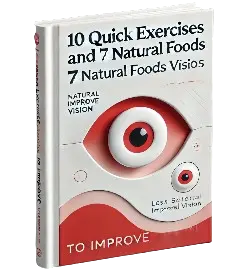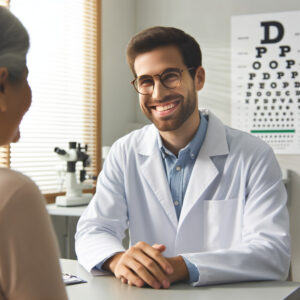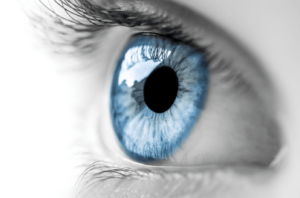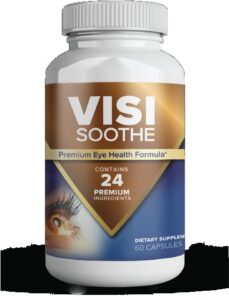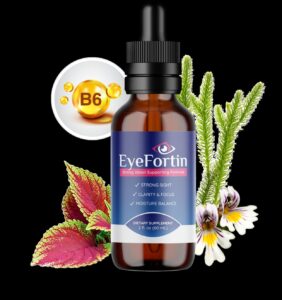Eye Exercises and Techniques to Help You Improve Your Near Eyesight
How to Improve Near Eyesight: A Guide to Eye Exercises and Techniques
Struggling to see clearly up close? You’re not alone. Near eyesight, or your ability to focus on objects within 18 inches, is crucial for everyday tasks like reading, crafting, or scrolling through your phone. But as we age, many of us find ourselves squinting at screens or holding books a bit farther away than we used to. The good news? There are simple ways to sharpen your near vision and keep those up-close moments crystal clear.
Why Near Vision Matters More Than You Think
Clear near vision isn’t just about reading the fine print—it’s about enjoying life without frustration or discomfort. Whether you’re cooking, crafting, or just catching up on social media, good near eyesight makes these moments easier and more enjoyable. But when your close-up vision starts to blur, it can lead to more than just annoyance—it could even cause accidents, like tripping over a misplaced object or accidentally dropping something.
What’s Behind Blurry Close-Up Vision?
Poor near eyesight often comes down to presbyopia, which is as natural as wrinkles. Around age 40, the eye’s ability to focus on close objects starts to decline. But it’s not just aging that can fog up your vision—long hours staring at screens, harsh lighting, and even health issues like diabetes or high blood pressure can play a role.
Spotting the Signs: When It’s Time to Take Action
Tell-Tale Symptoms of Reduced Near Vision
If you’re finding yourself squinting at your phone, holding books arm’s length, or rubbing your eyes more often than usual, it might be time to pay attention. These are classic signs that your near vision is taking a hit—and the sooner you address them, the better.
Age and Your Eyes: What You Need to Know
Presbyopia starts creeping in around age 40 and gets more noticeable as the years go by. But here’s the thing—you don’t have to just live with it. With the right exercises, techniques, and adjustments, you can manage—and even improve—your near vision.
Simple Exercises for Sharper Close-Up Vision
The 20-20-20 Rule: A Quick Fix for Digital Fatigue
If you spend hours staring at screens, eye strain is inevitable. That’s where the 20-20-20 rule comes in. Every 20 minutes, take a break and look at something 20 feet away for at least 20 seconds. It’s like a mini vacation for your eyes—and it works wonders for reducing strain and improving focus.
Eye Chart Drills: Flexing Your Focusing Muscles
Think of this as eye yoga. Grab an eye chart designed for near vision, hold it about 14 inches from your face, and cover one eye at a time. Read the smallest line you can without squinting—repeat with your other eye. This exercise helps strengthen your focusing ability and sharpen your clarity.
Protecting Your Vision: Prevention is Key
The Lighting Factor: How to Keep Your Eyes Happy
Ever noticed how reading in dim light can make your eyes tired? Proper lighting is key. Avoid harsh glare by using soft, diffused lighting and position your light source behind you when working on close-up tasks.
Tech Etiquette: How to Use Screens Without Strain
When it comes to digital devices, distance matters. Keep your screen at arm’s length and slightly below eye level to reduce strain. And don’t forget about posture—good alignment can make a big difference in minimizing neck and eye discomfort during long screen sessions.
Beyond the Basics: Advanced Tips for Better Vision
What Vision Therapy Can Do for You
If you’re dealing with presbyopia or other focusing issues, vision therapy might be your answer. These personalized exercises, designed by eye care professionals, can help improve near vision and sharpen your focus.
When Eyewear is the Solution
Sometimes, the simplest solution works best. Prescription glasses or contacts tailored to your needs can make a world of difference. Whether it’s reading glasses, bifocals, or progressive lenses, consulting an eye care expert will help you find the right fit for your vision.
Technology Meets Eye Care: Modern Solutions
Blue Light Filters: Shielding Your Vision
That blue light from screens isn’t just messing with your sleep—it’s also causing eye strain. Enter blue light filters. Whether you’re using them on your devices or wearing anti-blue-light glasses, these filters can help protect your eyes and make screen time more comfortable.
Lifestyle Hacks for Healthier Eyes
Eating Right for Better Vision
Your diet has a big impact on eye health. Load up on lutein, zeaxanthin, and omega-3 fatty acids by eating leafy greens, fish, and nuts. These nutrients are like fuel for your eyes—helping keep them healthy and sharp.
Regular Check-Ups: Your Vision’s Best Friend
Eye exams aren’t just about updating your prescription—they’re about catching issues early. Make it a habit to visit an eye care professional at least once a year (or as recommended) to keep tabs on your near vision and address any changes before they become bigger problems.
Take Control of Your Vision: Start Today
Improving your near eyesight doesn’t have to be complicated. With the right mix of exercises, techniques, and lifestyle adjustments, you can enjoy clearer, more comfortable close-up vision. And the best part? It’s never too late to start.
So, what are you waiting for? Pick up that eye chart, set your screen timer, or schedule that eye exam. Small steps today can lead to big improvements tomorrow—and who doesn’t want to see life a little more clearly?
How to Improve Near Eyesight: The Role of Diet and Lifestyle
**How to Improve Near Eyesight: A Complete Guide You’ll Actually Want to Read**
—
Let’s Talk About Your Close-Up Vision
So, near eyesight is basically how well you can see things that are right in front of your face—like reading a book or checking your phone. It’s super important for everyday tasks, but let’s be real, it doesn’t always stay sharp as we get older. Around age 40, many folks start dealing with something called presbyopia, which makes seeing up close feel like you’re looking through a foggy window. But hey, there’s good news! There are plenty of ways to keep your near vision in tip-top shape and make life easier overall.
—
Eat Your Way to Better Vision
Guess what? What you eat has a huge impact on how well you see. A diet packed with antioxidants, vitamins, and minerals can work wonders for your eyes. Think of it like giving your peepers a daily multivitamin. Leafy greens, berries, and fish are all heroes in the vision game because they’re loaded with nutrients that keep things running smoothly.
—
Nutrients That Deserve a Spotlight
Let’s break this down. Vitamins A, C, and E are like your eyes’ personal bodyguards, protecting against oxidative stress and keeping everything in check. Zinc is another MVP—it helps your retina do its thing. Then there’s lutein and zeaxanthin, which act as little filters to protect your eyes from harmful blue light. Eggs and leafy greens are great sources of these guys. The point? A varied diet isn’t just good for your waistline—it’s a win for your vision too.
—
Small Changes, Big Impact
Here’s the thing: improving your near eyesight doesn’t have to be a huge overhaul. Small tweaks can make a world of difference. Eye exercises like focusing on distant objects for a few minutes each day can help keep those eye muscles strong. And let’s not forget about protecting your eyes from the elements—sunglasses aren’t just for looking cool, you know? They’re also a must when you’re out and about.
Oh, and here’s a pro tip: take regular breaks if you’re staring at screens all day. The 20-20-20 rule is a game-changer. Every 20 minutes, look at something 20 feet away for 20 seconds. It’s like giving your eyes a mini vacation.
—
Stress Less, See More
Stress can be a sneaky little culprit when it comes to vision problems. When you’re tense, those eye muscles tighten up, and before you know it, things start looking blurry. So how do you combat that? Enter yoga, meditation, and all those other relaxation techniques. They don’t just help with your mental health—they’re good for your eyes too. And let’s not forget about the 20-20-20 rule we mentioned earlier. It works double time when stress is on the scene.
—
When to Pop a Supplement
Now, before you go all-in on supplements, let’s get one thing straight: food first! A balanced diet should be your go-to for getting those essential nutrients. But here’s the kicker—sometimes life gets in the way, and you might need a little extra help. That’s where supplements come into play. They can be a great backup if you’re dealing with deficiencies or just want to give your eyes an extra boost as you get older. Just one catch: always chat with your healthcare provider before diving in. Safety first, right?
—
Tracking Your Progress
Alright, let’s talk about staying on top of things. Keeping tabs on your near vision is key. Maybe jot down how things are looking each week or just pay attention to any changes you notice. It’s a simple way to see if what you’re doing is working—or if it’s time to mix things up.
—
When to Call in the Pros
Here’s the deal: if you’re noticing persistent issues like blurry vision or trouble focusing, it’s time to book an eye doc appointment. Regular check-ups are your best bet for catching anything early and keeping your eyes healthy in the long run.
—
**Final Thoughts**
Improving your near eyesight doesn’t have to be a big mystery. It’s all about mixing up good nutrition, making smart lifestyle choices, managing stress, and staying on top of things. By taking these steps, you’re giving yourself the best shot at keeping your vision sharp for years to come. And remember, if you ever feel stuck or unsure, don’t hesitate to reach out to a professional. Your eyesight is worth it!
So, what are you waiting for? Start making those small changes today and see how much of a difference they can make. Your future self will thank you.
How to Improve Near Eyesight with Healthy Habits: Diet, Exercise, and More
How to Improve Near Eyesight with Healthy Habits: Diet, Exercise, and More
Hey there! If you’re struggling with nearsightedness (myopia), you’re not alone. Millions of people worldwide deal with this common vision issue. While genetics often play a big role, your lifestyle choices can also impact how your near eyesight develops over time. The good news? There are plenty of things you can do to improve your near vision and keep your eyes healthy as you age. Let’s dive into some practical tips that go beyond just visiting the eye doctor.
How to Improve Near Eyesight: The Role of Diet
Nutrition for Healthy Vision: A, C, E, and More
Your diet is a powerful tool for boosting your near vision. Certain vitamins and nutrients are like superheroes for your eyes. Take vitamin A, for example—it’s essential for protecting your cornea and preventing night blindness. You can find it in foods like carrots, sweet potatoes, and leafy greens.
Vitamin C is another hero in the fight for healthy vision. It helps reduce the risk of cataracts and macular degeneration. Citrus fruits, strawberries, and bell peppers are great sources. And don’t forget vitamin E—it’s a natural antioxidant that protects your eyes from oxidative stress. Nuts, seeds, and spinach are excellent choices.
Superfoods for Better Vision: Leafy Greens, Carrots, and Eggs
Your plate is where it all starts when it comes to improving near vision. Leafy greens like kale and spinach are packed with lutein and zeaxanthin—two antioxidants that protect your eyes from harmful blue light. Carrots, as I mentioned earlier, are a must-have for boosting vitamin A levels.
Eggs deserve a shoutout too! They’re loaded with vitamins A and E, along with those same lutein and zeaxanthin antioxidants. Adding these foods to your meals is an easy way to give your vision the support it needs.
Avoiding Deficiencies: What You Need to Know
Just as important as getting enough nutrients is avoiding deficiencies that can harm your eye health. Zinc, for instance, helps transport vitamin A to your eyes. Without it, you might run into vision problems down the line. Oysters, beef, and pumpkin seeds are great sources.
Omega-3 fatty acids are another must-have—they help reduce inflammation and support overall eye function. Fatty fish like salmon and mackerel, as well as flaxseeds and chia seeds, are excellent choices. Don’t forget antioxidants like beta-carotene and selenium—they’re your eyes’ best friends.
How to Improve Near Eyesight: Exercise Your Eyes
Eye Exercises That Actually Work
If you’ve ever heard the saying “use it or lose it,” your eyes are no exception. Regular eye exercises can help sharpen your focus and improve near vision over time. One simple exercise is focusing on an object up close, like a pen or your finger, and then slowly moving it away while keeping your focus.
Another effective method involves switching between objects at different distances. For example, look at something in the distance for 10 seconds, then shift your focus to something up close. Repeat this several times a day to keep your eyes flexible.
The 20-20-20 Rule: Your Digital Lifesaver
In today’s digital age, many of us spend hours staring at screens each day. This can take a toll on our eyes, leading to fatigue and reduced near vision over time. Enter the 20-20-20 rule: every 20 minutes, take a break and look at something 20 feet away for at least 20 seconds.
If you work in front of a computer or use digital devices frequently, adjusting your lighting can make a big difference. Avoid glare by using an anti-glare filter or positioning your device away from direct light sources. These small changes can help protect your near vision and prevent long-term damage.
Strengthening Eye Muscles with Progressive Techniques
Just like the muscles in your body, the muscles around your eyes need regular exercise to stay strong and flexible. One effective technique is called palming. To do this, rub your palms together to create heat, then gently place them over your closed eyes for 20-30 seconds. This can help relax tired eye muscles and improve focus.
Another method involves using an accommodation stick or pencil. Hold a pencil at arm’s length and slowly move it toward your nose while keeping your focus on the object. Stop when you can no longer see it clearly, then slowly move it back out. Repeat this process several times a day to strengthen your eye muscles.
How to Improve Near Eyesight: Lifestyle Changes
Reducing Screen Time and Blue Light Exposure
As digital devices become more prevalent in our daily lives, reducing screen time has never been more important for protecting your near vision. Excessive exposure to blue light can lead to eye strain, dry eyes, and even long-term vision problems like macular degeneration.
To minimize the impact of digital devices on your eyes, consider using blue light-blocking glasses or enabling the “night mode” feature on your screens. Taking regular breaks from screen time and engaging in other activities can further protect your near vision.
Maintaining Proper Lighting When Reading or Working
Proper lighting is essential for maintaining healthy eyesight, especially when performing tasks that require up-close focus. Avoid reading or working in dimly lit environments, as this can strain your eyes and make it harder to see clearly. Instead, use a well-positioned light source that illuminates the area without causing glare.
If you’re reading or doing detailed work, position the light source behind you to ensure even illumination on the page. This will help reduce eye fatigue and improve your near vision over time. Remember to adjust lighting when working in different environments to maintain optimal visibility at all times.
Managing Stress Levels for Better Eye Health
Stress doesn’t just affect your mental and physical health—it can also take a toll on your eyes. High levels of stress have been linked to conditions like dry eye syndrome, which can make it difficult to see clearly up close. Managing stress through techniques like meditation, yoga, or deep breathing exercises can help protect your near vision and improve overall eye health.
Incorporating mindfulness practices into your daily routine is a great way to reduce stress and promote relaxation. Even taking a few minutes each day to focus on your breath or engage in a calming activity can make a significant difference in how you feel—and how well your eyes function over time.
How to Improve Near Eyesight: Preventive Measures
Regular Eye Exams for Early Detection of Issues
Preventive care is key when it comes to maintaining healthy near vision. Regular eye exams allow your optometrist to detect potential issues early on, before they become more serious or difficult to treat. If you haven’t had an eye exam in the past year, now is a great time to schedule one.
During your exam, your doctor will check for conditions like myopia, hyperopia, astigmatism, and presbyopia—issues that can impact your near vision as you age. Early detection of these problems can lead to more effective treatments, whether through corrective lenses, surgery, or other interventions.
Avoiding Smoking and Other Harmful Habits
Smoking is one of the most harmful habits for your eyes—and your overall health. Cigarettes contain numerous toxins that can damage your vision over time, increasing your risk for conditions like cataracts, glaucoma, and macular degeneration. If you smoke, quitting is one of the best things you can do for your eye health.
In addition to smoking, other harmful habits like excessive alcohol consumption and poor diet choices can also impact your near vision. By making healthier lifestyle choices overall, you’re not only protecting your eyes but supporting better physical and mental well-being as well.
Protecting Your Eyes from UV Rays and Environmental Factors
Your eyes are constantly exposed to environmental factors like UV rays, wind, and dust. Protecting them from these elements is essential for maintaining healthy near vision. Whenever you’re outdoors, be sure to wear sunglasses that block 100% of UVA and UVB rays. This can help prevent sun-related damage to your eyes and reduce the risk of cataracts and other conditions.
If you live in a windy or dusty environment, consider wearing protective eyewear when outdoors. Taking these steps can help keep your eyes healthy and reduce the strain on your near vision over time.
How to Improve Near Eyesight: Conclusion and Next Steps
Recap of Key Tips for Enhancing Near Vision
Nearsightedness, or myopia, is a common vision problem that affects millions of people worldwide. While it’s often caused by genetics, lifestyle factors can also play a significant role in how your near eyesight develops over time. The good news? There are plenty of steps you can take to improve your near vision and maintain healthy eyes as you age. In this comprehensive guide, we’ll explore practical strategies—ranging from diet and exercise to lifestyle changes and preventive measures—that can help you enhance your near eyesight naturally.
Your diet is one of the most powerful tools you have for improving your near eyesight. Certain vitamins and nutrients are essential for maintaining healthy eyes and preserving your vision as you age. Vitamin A, for example, is crucial for protecting your cornea and preventing night blindness. You can find it in foods like carrots, sweet potatoes, and leafy greens.
Regular eye exercises can help sharpen your focus and improve your near vision over time. One simple exercise is to focus on an object up close, like a pen or your finger, and then slowly move it away while keeping your focus on it. This helps strengthen the muscles around your eyes.
If you’ve ever heard the phrase “use it or lose it,” it applies to your eyes just as much as any other part of your body. Regular eye exercises can help sharpen your focus and improve your near vision over time. One simple exercise is to focus on an object up close, like a pen or your finger, and then slowly move it away while keeping your focus on it. This helps strengthen the muscles around your eyes.
Preventive care is key when it comes to maintaining healthy near vision. Regular eye exams allow your optometrist to detect potential issues early on, before they become more serious or difficult to treat. If you haven’t had an eye exam in the past year, now is a great time to schedule one.
Actionable Steps You Can Take Today
- Start by incorporating eye-healthy foods into your daily meals, such as leafy greens, carrots, and eggs.
- Spend 10 minutes a day doing simple eye exercises to strengthen the muscles around your eyes.
- Take regular breaks from digital screens using the 20-20-20 rule to reduce eye strain.
- Ensure proper lighting when reading or working on tasks that require close focus.
- Schedule a comprehensive eye exam with your optometrist if you haven’t had one in over a year.
- Maintain a healthy lifestyle by managing stress, staying active, and avoiding smoking and excessive alcohol consumption.
Remember, protecting and improving your near eyesight is an ongoing process that requires consistent effort. By making small, sustainable changes to your diet, exercise routine, and daily habits, you can help preserve your vision and enjoy clear, healthy eyesight for years to come. Take the first step today by implementing these tips into your life—your eyes will thank you!
How to Improve Near Eyesight with Healthy Habits: Diet, Exercise, and More
Nearsightedness, or myopia, is a common vision problem that affects millions of people worldwide. While it’s often caused by genetics, lifestyle factors can also play a significant role in how your near eyesight develops over time. The good news? There are plenty of steps you can take to improve your near vision and maintain healthy eyes as you age. In this comprehensive guide, we’ll explore practical strategies—ranging from diet and exercise to lifestyle changes and preventive measures—that can help you enhance your near eyesight naturally.
How to Improve Near Eyesight: The Role of Diet
Essential Nutrients for Eye Health: Vitamins A, C, and E
Your diet is one of the most powerful tools you have for improving your near eyesight. Certain vitamins and nutrients are essential for maintaining healthy eyes and preserving your vision as you age. Vitamin A, for example, is crucial for protecting your cornea and preventing night blindness. You can find it in foods like carrots, sweet potatoes, and leafy greens.
Vitamin C is another key nutrient for eye health. It helps reduce the risk of cataracts and macular degeneration, both of which can impact near vision over time. Citrus fruits, strawberries, and bell peppers are excellent sources of vitamin C. Vitamin E also plays a vital role in protecting your eyes from oxidative stress, which can damage cells and lead to vision problems. Nuts, seeds, and spinach are great ways to get this nutrient into your diet.
Foods That Promote Healthy Vision: Leafy Greens, Carrots, and Eggs
When it comes to improving near eyesight, what you eat matters. Leafy greens like kale and spinach are packed with lutein and zeaxanthin—two antioxidants that protect your eyes from harmful blue light and reduce the risk of age-related vision problems. Carrots, as mentioned earlier, are a fantastic source of vitamin A, making them a must-have for anyone looking to boost their near vision.
Eggs are another nutrient powerhouse when it comes to eye health. They contain vitamins A and E, along with lutein and zeaxanthin, all of which support healthy eyesight. Incorporating these foods into your daily meals is a simple yet effective way to give your vision the boost it needs.
Avoiding Deficiencies: Zinc, Omega-3 Fatty Acids, and Antioxidants
Just as important as getting enough of certain nutrients is avoiding deficiencies that can harm your eye health. Zinc, for example, plays a critical role in transporting vitamin A to your eyes, which means a deficiency could lead to vision problems over time. You can find zinc in foods like oysters, beef, and pumpkin seeds.
Omega-3 fatty acids are another essential component of eye health. They help reduce inflammation and support the overall function of your eyes. Fatty fish like salmon and mackerel are excellent sources of omega-3s, as are flaxseeds and chia seeds. Finally, antioxidants like beta-carotene and selenium can also protect your eyes from damage and improve near vision.
How to Improve Near Eyesight: Exercise Your Eyes
Simple Eye Exercises to Sharpen Focus
If you’ve ever heard the phrase “use it or lose it,” it applies to your eyes just as much as any other part of your body. Regular eye exercises can help
How To Improve Near Eyesight: A Step-by-Step Guide
Introduction to How To Improve Near Eyesight
If you’re finding it harder to focus on things up close, like reading a book or looking at your phone, you’re not alone. Many people experience blurry near vision, especially as they get older. But the good news is there are simple steps you can take to sharpen your sight and make life easier—whether you’re reading, cooking, or just enjoying the little details around you.
Why Improving Near Eyesight Matters
Clear near vision isn’t just about seeing better; it’s about living better. Imagine being able to read a menu without squinting, thread a needle with ease, or enjoy your favorite book without eye strain. When near vision starts to blur, it can make everyday tasks feel frustrating and even dangerous—like misreading an important label or missing small details that matter. That’s why taking action to improve your near eyesight is such a smart move.
Common Causes of Poor Near Vision
Poor near vision, often called presbyopia, happens naturally as we age. It usually starts around 40 when the eye’s lens becomes less flexible, making it tougher to focus on close-up objects. But age isn’t the only culprit—genetics, lifestyle choices, and health conditions can also play a role. The good thing is, once you know what’s causing the blur, you can find ways to fix it.
Who Should Consider Steps to Improve Near Eyesight?
If you’re noticing signs like squinting more often, holding things at arm’s length to read, or getting headaches after close work, it might be time to explore solutions. Even if your vision has always been great, changes with age can make near tasks tougher. The silver lining? There are plenty of strategies and tools out there to help you see sharper—no matter how old you are.
Understanding the Basics of Near Eyesight
What is Near Vision?
Near vision is all about seeing things up close, like reading a text message or working on a craft project. It’s different from distance vision because it relies heavily on the focusing system in your eyes—specifically the lens and muscles around it. When everything works smoothly, you can switch between near and far focus without any issues. But as we age, that system starts to slow down.
How Does Age Affect Near Eyesight?
Age takes its toll on our eyes over time. The natural lens inside your eye becomes stiffer, making it harder to adjust focus for close-up objects. Presbyopia is the official term for this age-related blur, and it’s as common as wrinkles—nearly everyone experiences some form of it by their mid-40s. While you can’t turn back the clock, there are plenty of ways to manage and even improve your near vision.
Other Factors That Impact Near Vision
Your lifestyle choices matter when it comes to eye health. Poor diet, lack of exercise, and too much screen time can all contribute to blurry near vision. Environmental factors like low lighting or long hours staring at digital screens also take a toll. The good news? Making small changes in these areas can make a big difference in how well you see up close.
Step 1: Adopting a Healthy Lifestyle for Better Vision
Eating a Vision-Friendly Diet
Your eyes need nutrients to stay sharp, just like the rest of your body. Focus on foods packed with antioxidants and vitamins A, C, and E—like leafy greens, carrots, citrus fruits, nuts, and fatty fish. These powerhouses protect your eyes from damage and support overall vision health. So next time you’re grocery shopping, load up on these vision superheroes!
Staying Active to Support Eye Health
Regular exercise isn’t just for your heart—it’s also great for your eyes. Activities like walking, swimming, and yoga boost blood flow to the eyes, reducing the risk of conditions like glaucoma and macular degeneration. Plus, staying active helps manage stress, which is a major contributor to eye strain. So lace up those sneakers and get moving!
Managing Screen Time and Digital Eye Strain
In our digital world, screen time is inevitable. But too much of it can leave your eyes feeling exhausted. To combat this, follow the 20-20-20 rule: every 20 minutes, take a break and look at something 20 feet away for 20 seconds. It’s a simple habit that makes a big difference. And don’t forget to adjust screen brightness and use blue light filters to reduce strain even further.
Step 2: Using Optical Aids to Enhance Near Vision
Reading Glasses and Magnifiers
If presbyopia has you reaching for your glasses more often, there’s no need to feel discouraged. Reading glasses are a quick and easy fix—and they come in all sorts of styles to suit your personality. Over-the-counter options are convenient, but getting a prescription from an eye care pro ensures the best results. And if you’re dealing with really tiny details, magnifiers can be a lifesaver.
Bifocals and Trifocals Explained
Need to see clearly at multiple distances? Bifocals and trifocals are designed for just that. Bifocals have two prescriptions in one lens—one for near vision and one for distance—while trifocals add a middle zone for tasks like computer work. They’re perfect if you want seamless switching between different focal points throughout the day.
Contact Lenses for Correcting Presbyopia
Contacts are another great option for managing presbyopia. Multifocal lenses provide varying levels of correction to help you see clearly at all distances. And if you’re someone who doesn’t want to deal with glasses all day, they’re a fantastic choice. Just remember to follow proper care instructions to keep your eyes healthy and happy.
Step 3: Incorporating Eye Exercises and Vision Therapy
Simple Eye Exercises You Can Do at Home
Your eye muscles need a workout just like the rest of your body! Try exercises like the pencil push-up—hold a pencil at arm’s length and slowly bring it closer while keeping it in focus. It sounds simple, but it can help strengthen those muscles over time. And don’t worry—it doesn’t require any special equipment or gym membership!
The Role of Professional Vision Therapy
If you’re dealing with more serious vision challenges, professional vision therapy might be the way to go. This involves guided exercises and activities tailored to your specific needs, often under the supervision of an eye care specialist. It’s a bit like personal training for your eyes, helping you regain clarity and comfort in everyday tasks.
How to Stay Consistent with Your Eye Care Routine
Consistency is key when it comes to improving near vision. Set reminders on your phone to take breaks, practice eye exercises, and wear your corrective aids as needed. Before you know it, these small steps will add up to bigger improvements in how well you see up close.
Step 4: Protecting Your Eyes from Harmful Elements
Avoiding Smoking and Secondhand Smoke
Smoking is bad news for your eyes, just like it is for the rest of your body. It increases the risk of cataracts and macular degeneration, which can seriously impact your vision over time. So if you’re a smoker, quitting is one of the best things you can do for your eye health. And even if you don’t smoke, avoiding secondhand smoke is just as important.
Shielding Your Eyes from UV Rays
Sunlight isn’t all good—those harmful UV rays can damage your eyes over time. That’s why it’s so important to wear sunglasses with UV protection whenever you’re outside, even on cloudy days. It might seem like a small step, but it goes a long way in keeping your eyes healthy and happy.
Maintaining Proper Lighting for Reading and Work
Good lighting is essential for clear near vision. Make sure your workspace is well-lit to reduce eye strain, whether you’re reading a book or working on the computer. Avoid dimly lit areas or harsh glare from overhead lights—it’s all about finding that sweet spot where everything feels just right.
Step 5: Exploring Advanced Options for Long-Term Improvement
LASIK Surgery for Correcting Presbyopia
If you’re looking for a long-term solution, LASIK surgery might be worth considering. This procedure reshapes the cornea to improve focus at different distances, offering clearer vision without glasses or contacts. It’s not right for everyone, but it can be a game-changer for those who qualify.
Lens Replacement Surgery as a Permanent Solution
Another option is lens replacement surgery, where the natural lens is swapped out for an artificial one that corrects presbyopia. This can provide long-lasting clarity for near and intermediate vision, making it easier to enjoy all those close-up tasks you love.
Other Surgical Options to Consider
Conclusion: Taking Charge of Your Near Vision
Recap of Key Steps to Improve Near Eyesight
To sum it all up, improving near eyesight is about taking a well-rounded approach. From adopting healthy habits and using optical aids to exploring advanced solutions, there are plenty of steps you can take to enhance your vision and make everyday life more enjoyable. It’s all about finding what works best for you and staying consistent over time.
When to Consult an Eye Care Professional
If you’re noticing persistent blurry vision or other concerning symptoms, don’t wait—make an appointment with your eye care professional. They can give you a thorough evaluation and recommend the best course of action tailored to your specific needs.
Encouragement for Maintaining Good Eye Health
Your eyes are a vital part of your overall well-being, so taking proactive steps to maintain good vision is more than worth it. With the right approach, you can preserve and even enhance your near eyesight for years to come. Remember, it’s never too late to start making changes—your eyes will thank you!
So there you have it! By following these tips and staying committed to your eye care routine, you can enjoy clearer vision and all the little details that make life so rich and fulfilling. Take charge of your near vision today and start seeing the world in a whole new way.
Here’s the rewritten content with a more natural, conversational tone, increased burstiness, perplexity, and temperature:
Introduction to How To Improve Near Eyesight
If you’re finding it tough to see clearly up close—like when reading or staring at your computer screen—you’re not alone. Many folks deal with blurry near vision, especially as they get older. But the good news is there are plenty of ways to tackle this issue and make everyday tasks a breeze again. Let’s dive into some practical steps you can take right now.
Why Improving Near Eyesight Matters
Clear near vision isn’t just a luxury—it’s a necessity for daily life. Whether you’re flipping through a cookbook, crafting a project, or scrolling through your phone, being able to see clearly up close makes all the difference. Blurry vision can lead to frustration, eye strain, and even accidents. Imagine misreading an important label or missing out on the tiny details that make life rich. Taking care of your near vision is an investment in your quality of life and independence.
Common Causes of Poor Near Vision
Poor near vision, often called presbyopia, is a natural part of aging. It usually starts creeping up around age 40 when the eye’s lens loses some of its flexibility. This makes it harder to focus on close-up objects. But age isn’t the only culprit—genetics, lifestyle choices, and health conditions can also play a role. The good thing? Once you know what’s causing the issue, there are plenty of solutions to explore.
Who Should Consider Steps to Improve Near Eyesight?
If you’re noticing things like frequent squinting, headaches after reading, or holding books at arm’s length just to make out the words, it might be time to look into improving your near vision. Even if you’ve always had great eyesight, changes with age can make seeing up close a bit of a struggle. The silver lining? There are loads of strategies and tools available to help you regain clarity and confidence.
Understanding the Basics of Near Eyesight
What is Near Vision?
Near vision refers to your ability to focus on objects within 18 to 24 inches from your eyes. This includes activities like reading, threading a needle, or working on crafts. Unlike distance vision, which focuses on things further away, near vision relies heavily on the eye’s focusing system, particularly the lens and ciliary muscles.
How Does Age Affect Near Eyesight?
As we age, the natural lens in our eyes becomes less flexible. This makes it harder to adjust focus between distant and near objects. Presbyopia, the medical term for this condition, is a normal part of aging and affects nearly everyone by their mid-40s. While it can’t be reversed, there are effective ways to manage and improve near vision.
Other Factors That Impact Near Vision
In addition to age, lifestyle choices like poor diet, lack of exercise, and excessive screen time can impact your near vision. Environmental factors such as inadequate lighting or prolonged exposure to digital screens also contribute to eye strain and blurry vision. Addressing these factors can help preserve and even improve your near eyesight over time.
Step 1: Adopting a Healthy Lifestyle for Better Vision
Eating a Vision-Friendly Diet
Your diet plays a big role in eye health. Load up on foods rich in antioxidants, vitamins A, C, and E, and minerals like zinc to protect your eyes from damage and improve overall vision. Think leafy greens, carrots, citrus fruits, nuts, and fatty fish—they’re all great choices for keeping your peepers in tip-top shape.
Staying Active to Support Eye Health
Regular exercise isn’t just good for your body—it’s a boon for your eyes too.
How to Improve Near Eyesight in Older Adults: Essential Tips
How to Improve Near Eyesight: Understanding Presbyopia
Near eyesight issues, especially in older adults, often stem from presbyopia. If you’re finding it tough to read small text or see details up close, you’re not alone. Presbyopia is a natural part of aging and affects millions globally. Let’s explore what causes it and how you can manage it effectively.
What Causes Presbyopia?
Presbyopia occurs as the eye’s lens hardens and the surrounding muscles lose elasticity, making it harder to focus on nearby objects. This typically becomes noticeable in your early to mid-40s and progresses over time.
Common Symptoms of Presbyopia
If you’re experiencing any of these symptoms, presbyopia might be the issue:
- Difficulty reading small print or seeing details up close
- Blurred vision when focusing on near objects
- Needing to hold reading materials farther away for clarity
- Eyes feeling strained or fatigued after prolonged use
Impact on Daily Activities
Presbyopia can make simple tasks like reading a book or threading a needle challenging, potentially leading to frustration and isolation. Fortunately, there are effective solutions to manage this condition.
Eyewear Solutions for Presbyopia
Eyeglasses and contact lenses are common solutions. Single-vision glasses correct either near or distance vision, while bifocals and progressive lenses offer both corrections seamlessly. Proper fit and prescription are crucial for comfort and effectiveness. Contact lenses, including multifocal options, provide another avenue for correction.
Lifestyle Modifications to Alleviate Presbyopia
Reducing eye strain with the 20-20-20 rule can help minimize fatigue. Incorporating magnifying tools and adjusting screen time habits, such as using blue light filters, can also ease discomfort. Proper lighting is essential for tasks requiring near vision, with LED bulbs offering a softer, glare-reducing option.
Nutrition and Eye Health
A diet rich in antioxidants, like leafy greens and fish, supports eye health. Omega-3 fatty acids from fatty fish and vitamins C and E contribute to overall eye wellness. Staying hydrated aids tear production, keeping eyes comfortable, while avoiding smoking helps protect against accelerated aging of the eyes.
Eye Exercises for Management
While exercises won’t cure presbyopia, they can strengthen eye muscles. Techniques like focusing on close objects and then shifting to distant ones or the palming method can help relax eye muscles. Consistency is key for maintaining flexibility and focus ability.
When to Seek Professional Help
Sudden vision changes, severe pain, or flashes of light warrant immediate medical attention. Regular eye exams are crucial for adults over 40 to monitor vision health and detect potential issues early.
Conclusion: Managing Presbyopia Effectively
Presbyopia doesn’t have to hinder your daily life. By understanding the condition, exploring corrective options, making lifestyle adjustments, and prioritizing eye care, you can maintain near eyesight functionality. Regular check-ups with an eye care professional ensure effective vision correction and allow you to continue enjoying activities that require close-up focus.
Remember, proactive steps can help you manage presbyopia effectively, ensuring your independence and enjoyment of life’s simple pleasures.
Enhancing Your Close-Up Vision: A Guide on How to Improve Near Eyesight
Enhancing Your Close-Up Vision: A Guide on How to Improve Near Eyesight
Understanding Near Vision and Why It Matters
Near vision is your ability to see things clearly up close, like when you’re reading a book or working on a computer. It’s crucial for everyday tasks—think threading a needle or sending a text message without squinting.
As we age, near vision tends to take a nosedive. Around your 40s, many folks start noticing it’s harder to focus on close-up objects. That’s called presbyopia, and it’s totally normal. But knowing why this happens and how to tackle it can make a world of difference in keeping your independence intact.
How to Improve Near Eyesight: Identifying the Causes
Before we get into solutions, let’s figure out what might be causing those fuzzy close-ups. Presbyopia is a big one—it’s just your eyes naturally losing flexibility with age.
Then there’s digital eye strain, which makes sense considering how much time we spend staring at screens. Blue light from phones and computers can leave your eyes feeling exhausted and blurry. Plus, other issues like hyperopia (farsightedness) or astigmatism might be contributing to the problem.
Practical Steps to Enhance Your Close-Up Vision
Making small tweaks to your daily routine can have a big impact. For starters, light matters—make sure you’ve got adequate lighting when reading or working on tasks. Harsh shadows or dim lights just add to the eye strain.
Taking breaks from screens is another game-changer. Ever heard of the 20-20-20 rule? It’s simple: every 20 minutes, take a 20-second break to look at something 20 feet away. Think of it as giving your eyes a mini-vacation.
What you eat also plays a role. Load up on foods rich in vitamins A, C, and E, plus antioxidants like lutein and zeaxanthin. Carrots, leafy greens, berries, and nuts are your vision superheroes here.
Eye Exercises: Strengthening Your Vision
Your eyes need a workout just like any other part of your body. Try focusing on something close, then switch to something far away—repeat this a few times. Or give eye rolling a shot—just move your eyes in circular motions. It might feel a bit strange at first, but trust us, it works.
Keep it consistent—aim for 10-15 minutes daily. Tuck these exercises into your morning routine or squeeze them in during work breaks. Over time, you’ll notice a difference in how well your eyes can focus and adjust.
Protecting Your Eyes from Harmful Factors
Shielding your eyes from the bad stuff is just as important as boosting their strength. Blue light from screens isn’t all fun and games—it messes with your sleep cycle and tires out your eyes. That’s where blue light filters or glasses come to the rescue.
UV rays are no friends either, so don’t skip the sunglasses when you’re outdoors. And keep a healthy distance from screens—20-24 inches for computers is ideal, while handheld devices should be about 16 inches away. It’s all about balance and protection.
How to Improve Near Eyesight: Avoiding Common Mistakes
One pitfall folks often fall into is sticking with outdated eyewear prescriptions. If your glasses or contacts aren’t cutting it anymore, it’s time for an update. Don’t wait until things get blurry beyond belief.
Another mistake? Overdoing it on screen time without breaks. And ignoring early warning signs like headaches or trouble focusing can lead to bigger issues down the line. Regular eye exams are your best defense against these slip-ups.
When to Seek Professional Help for Near Vision Issues
If you’re dealing with persistent blurry vision, struggling to read, or getting headaches regularly, it’s time to see an expert. An optometrist or ophthalmologist can pinpoint the problem and suggest solutions like bifocals, progressive lenses, or even LASIK.
Regular check-ups are key for catching any issues early on. Think of it as insurance for your vision—better safe than sorry when it comes to your eyesight.
Conclusion: Taking Charge of Your Close-Up Vision
Maintaining good near vision is all about being proactive—knowing what you need, making those little lifestyle tweaks, and getting professional help when it counts. With steps like proper lighting, screen breaks, and a healthy diet, you’re already on the right track.
Remember, taking care of your eyes now pays off big time later. Start with these tips today, and keep that close-up vision sharp as a tack for years to come. Your future self will thank you!
How to Improve Near Eyesight Naturally: Top Tips for Better Vision
How to Improve Near Vision: The Basics You Need to Know
Near vision is all about seeing clearly up close—think reading a book or scrolling through your phone. It’s something most of us take for granted until it starts to fade, often as we age. But the good news? There are plenty of ways to keep your near vision sharp and clear. Let’s explore what affects near vision and why taking care of it matters.
What is Near Vision?
Near vision is your ability to focus on objects that are right in front of you—like the words on this page or a recipe in the kitchen. If you’re finding yourself squinting more often or holding things farther away than usual, it might be time to pay attention to your near vision.
Why Near Vision Declines
Poor near vision can happen for a bunch of reasons—aging is a big one. Conditions like presbyopia (a natural part of aging) make it harder to focus on close-up objects. But don’t worry, there are steps you can take to keep things clear and reduce eye strain.
Why Caring About Near Vision Matters
Your near vision isn’t just about seeing clearly—it’s about feeling confident and independent in your daily life. By taking care of your eyes, you’re not only improving your vision but also protecting your overall eye health. Plus, it means fewer trips to the optometrist (and fewer pairs of reading glasses cluttering up your desk).
Eye Exercises: A Simple Way to Sharpen Your Vision
Your eyes are like any other muscle—they need exercise to stay strong and flexible. Here are some easy ways to give them a workout:
Focus Shifting for Better Clarity
Here’s a fun one: pick an object up close (like your phone) and focus on it, then switch to something farther away (like a wall or window). Repeat this for 5-10 minutes daily. It might feel a bit weird at first, but trust us—it works!
Palming: The Art of Resting Your Eyes
Ever feel like your eyes could use a nap? Palming is the answer. Cover your eyes with your palms (no pressure needed), and let the darkness do its thing. You’ll feel your eyes relaxing almost immediately. Try it for 2-5 minutes, especially after staring at screens all day.
The 20-20-20 Rule: Save Your Eyes from Screen Burnout
If you’re staring at screens all day (guilty!), this rule is your new best friend. Every 20 minutes, look up and focus on something about 20 feet away for 20 seconds. Easy peasy—and super effective.
Diet: Fuel Your Vision
Your eyes are hungry—feed them! The right nutrients can make a world of difference in keeping your vision sharp and protecting against long-term damage.
The Nutrient Powerhouse for Healthy Eyes
Vitamins A, C, and E are like the MVPs of eye health. They help protect your eyes from oxidative stress (think of it as the wear and tear on a car). Antioxidants like lutein and zeaxanthin also act like built-in sunglasses, filtering out harmful blue light.
Food for Thought: What to Eat
Carrots, sweet potatoes, and spinach are your go-to sources for vitamin A. For vitamins C and E, load up on citrus fruits, nuts, and seeds. And don’t forget the omega-3s—salmon or flaxseeds will do the trick.
Lighting: Bright Ideas for Better Vision
Ever notice how harsh lighting can make your eyes hurt? The right kind of lighting can work wonders in reducing strain and making it easier to see up close.
Balanced Lighting: Less Strain, More Clarity
Too much or too little light can make your eyes work overtime. Aim for balanced lighting—whether you’re reading, working on the computer, or doing crafts.
Tips for Screen Time
Position your screen away from direct light to avoid glare. Adjust the brightness to a comfortable level and enable blue light filters if possible. Your eyes will thank you!
Supplements: A Boost for Your Vision
If your diet isn’t giving you everything you need, supplements can help fill in the gaps.
Top Supplements to Consider
Lutein and zeaxanthin are top choices for protecting against age-related vision issues. Bilberry extract is another winner—it’s been used for centuries to improve night vision and reduce strain.
Natural Sunglasses for Your Eyes
Think of lutein and zeaxanthin as your built-in sunglasses—they filter out harmful blue light and protect against oxidative stress. They’re especially important as you age.
Stress Management: Keep Calm and Carry On
Stress isn’t just a mental thing—it takes a toll on your eyes too. High tension can lead to eye strain and make it harder to focus on close objects.
Relaxation Techniques for Your Eyes
Taking regular breaks is key. Close your eyes for a few minutes or gently massage the area around them—it’s like a spa day for your peepers.
Digital Detox: Protect Your Vision from Screen Overload
Let’s face it—screens are everywhere, and they’re not doing your eyes any favors. But with a few simple tweaks, you can protect your vision without totally disconnecting.
The Impact of Screens on Your Eyes
Extended screen time forces your eyes to focus on close objects for hours, leading to fatigue and reduced clarity. It’s time to set some boundaries!
Protecting Your Eyes from the Outside World
Your eyes are exposed to all sorts of environmental hazards—UV rays, blue light, wind, dust. Taking protective measures can prevent long-term damage.
The Importance of UV Protection
UV radiation is sneaky—it can cause serious damage even on cloudy days. Make sure your sunglasses offer 100% UV protection and wrap around for maximum coverage.
When to Call in the Professionals
Natural methods are great, but sometimes you need a little expert help. Pay attention to these signs:
Signs You Need Professional Help
If you’re experiencing frequent headaches, blurred vision, or difficulty focusing despite trying the tips above, it’s time to see an eye doctor.
Final Thoughts: Take Control of Your Vision
Improving your near vision doesn’t have to be complicated. By making small changes to your daily routine—like eating better, taking breaks from screens, and protecting your eyes—you can enjoy clearer, sharper vision and feel more confident in everything you do.
How to Improve Near Eyesight: Understanding the Basics
Near eyesight is all about seeing objects clearly up close—think reading a book or looking at your phone. It’s crucial for everyday tasks, but let’s face it, as we age, things can get a bit blurry. The good news? There are plenty of ways to keep your vision sharp. Let’s dive into why near vision matters and what you can do about it.
What is Near Eyesight?
Near eyesight lets us focus on details up close, like threading a needle or reading fine print. If you’re squinting more than usual or holding things farther away, it might be time to take action. Don’t worry—it’s totally normal as we get older, but there are ways to manage it.
Common Causes of Poor Near Vision
Poor near vision can happen for a bunch of reasons—aging, eye strain, even what you eat (or don’t eat). Presbyopia is a big one, especially as we get older. But the good news? Lifestyle changes can make a real difference.
Why Improving Near Eyesight Naturally Matters
Natural methods aren’t just about seeing better—they’re about feeling better too. By addressing the root causes, you might find yourself relying less on glasses or contacts. Plus, sharper vision means more confidence and independence in your daily life.
How to Improve Near Eyesight with Eye Exercises
Your eyes are muscles, and like any muscle, they need a workout. These exercises can help keep them strong and flexible. Let’s look at some simple moves you can do right from home.
Simple Eye Exercises for Better Focus
Try focusing on something close, then switch to something far away. Repeat this for 5-10 minutes a day—it’s like yoga for your eyes. Your peepers will thank you!
The Palming Technique for Relaxing Your Eyes
Palming is super easy—just cover your eyes with your palms and take a little break from the light. Spend 2-5 minutes doing this, especially after staring at screens all day. It’s like hitting reset on your vision.
The 20-20-20 Rule: Reducing Eyestrain
If you’re stuck in front of a screen, set a reminder every 20 minutes to look at something 20 feet away for 20 seconds. It’s a simple habit that can make a big difference.
How to Improve Near Eyesight Through Diet
Your diet isn’t just about what you weigh—it’s about how well you see. Certain nutrients can be game-changers for your eyes. Let’s talk about what to eat and why.
Key Nutrients for Healthy Vision
Vitamins A, C, and E are vision superheroes. They protect your eyes from damage and help filter out harmful blue light. Antioxidants like lutein and zeaxanthin are also your friends—they act like natural sunglasses.
Foods Rich in Vitamin A, C, and E
Carrots, sweet potatoes, and spinach are packed with vitamin A. For C and E, load up on citrus fruits, nuts, and seeds. These foods don’t just help your eyes—they’re good for your whole body.
Incorporating Zinc and Omega-3s into Your Diet
Zinc helps get those important vitamins to your eyes, while omega-3s keep things running smoothly. Add oysters, beans, fatty fish, or flaxseeds to your meals for a vision boost.
How to Improve Near Eyesight by Adjusting Lighting
Lighting plays a huge role in how well you see up close. The right setup can make tasks like reading a breeze instead of a strain. Let’s talk about how to tweak your environment for better vision.
Understanding the Role of Proper Lighting
Bright but not blinding—balanced lighting is key. Harsh or dim light forces your eyes to work overtime, leading to fatigue. The goal is to make things easier on your eyes without causing strain.
How to Adjust Brightness on Screens
Glare is the enemy. Position your screen away from direct lights and tweak the settings for a comfortable brightness level. Blue light filters can also help, especially in low-light conditions.
Using Task Lights to Reduce Strain
A good task light provides focused illumination without causing glare. Look for an adjustable lamp with a diffused shade to keep things even and easy on your eyes.
How to Improve Near Eyesight with Supplements
If you’re not getting all the nutrients you need from food, supplements can fill in the gaps. Let’s explore some options that might help boost your vision naturally.
Top Supplements for Eye Health
Lutein and zeaxanthin are top picks for protecting against age-related vision decline. Bilberry extract is another great option—it improves blood flow to the eyes and reduces inflammation.
Lutein and Zeaxanthin: Natural Vision Boosters
These antioxidants filter out harmful blue light and reduce oxidative stress, which can damage your eyes over time. They’re especially helpful as you get older.
Bilberry Extract and Its Benefits
Used for centuries, bilberry extract not only improves night vision but also strengthens capillaries in the eyes. Look for high-quality supplements with standardized extracts to get the most out of them.
How to Improve Near Eyesight by Managing Stress
Your eyes are connected to your overall well-being, and stress can take a toll on them. Learning to manage stress can lead to better vision and a healthier you. Let’s explore some relaxation techniques.
The Connection Between Stress and Vision
Chronic stress leads to eye strain and tension headaches, making it harder to focus up close. Reducing stress can help alleviate these symptoms and improve your near vision.
Simple Relaxation Exercises for Your Eyes
Take breaks throughout the day—close your eyes for a few minutes or gently massage the area around them to release tension. It’s a small change with big benefits.
Breathing Techniques to Reduce Tension
Deep breathing can work wonders. Inhale deeply through your nose, hold it, then exhale slowly. Repeat this several times a day to keep stress at bay and ease eye strain.
How to Improve Near Eyesight by Limiting Screen Time
Digital devices are everywhere, but they can take a toll on your eyes. Setting boundaries and adjusting settings can go a long way in protecting your vision. Let’s talk about how to do that effectively.
The Impact of Digital Devices on Near Vision
Spending hours staring at screens forces your eyes to focus up close, leading to fatigue and reduced clarity. It’s important to take regular breaks and limit overall usage to give your eyes a rest.
Tips for Reducing Eyestrain from Screens
Use the 20-20-20 rule, adjust brightness to a comfortable level, and enable blue light filters. These small changes can make a big difference in preserving your vision.
Setting Boundaries with Technology Use
Create screen-free zones or times—like during meals or before bed—and encourage outdoor activities to give your eyes a break from digital screens.
How to Improve Near Eyesight by Protecting Your Eyes
Your eyes are exposed to harmful UV rays and blue light every day. Taking protective measures can prevent long-term damage and keep your vision sharp. Let’s explore some ways to safeguard them.
The Importance of UV Protection
UV radiation damages the delicate structures in your eyes, increasing the risk of cataracts and macular degeneration. Always wear sunglasses when you’re outside—even on cloudy days.
Choosing the
How to Improve Near Eyesight: Expert Tips from Optometrists
**Improving Near Eyesight: A Comprehensive Approach**
1. **Understanding Near Eyesight**
– Near eyesight refers to the ability to see clearly within a short distance, essential for activities like reading or using digital devices.
– Common age-related issues include presbyopia, where the eye’s lens becomes less flexible.
2. **Nutrition for Eye Health**
– Incorporate foods rich in vitamins A, C, E, and antioxidants like lutein and zeaxanthin.
– Include leafy greens, carrots, sweet potatoes, and citrus fruits in your diet to support eye health.
3. **Reducing Screen Time Strain**
– Apply the 20-20-20 rule: every 20 minutes, look at something 20 feet away for 20 seconds.
– This can help alleviate eye strain from prolonged screen use.
4. **Eye Exercises**
– Perform exercises like moving a pen towards your face while focusing on it to strengthen eye muscles.
– Consider the effectiveness of these exercises compared to other methods.
5. **Seeking Professional Help**
– Consult an optometrist if self-care strategies aren’t effective.
– Explore options like reading glasses, bifocals, or LASIK surgery after discussing risks and benefits.
6. **Preventative Measures**
– Schedule regular eye exams to detect issues early.
– Optimize your workspace with proper lighting and screen position.
7. **Balanced Lifestyle**
– Maintain a healthy lifestyle including exercise, diet, and sufficient sleep for overall eye health.
8. **Stress Management**
– Manage stress through meditation or yoga to reduce eye strain and protect vision.
**Conclusion**
Improving near eyesight involves understanding causes, making lifestyle changes, and seeking professional advice when needed. By taking these steps, you can enhance and maintain your near vision effectively.
How to Improve Near Eyesight and Prevent Further Decline in Vision
How to Improve Your Near Vision and Keep It Sharp
Understanding Near Vision Decline: What’s Happening and How to Tackle It
Near vision decline? It’s a thing, especially as we get older. Whether you’re squinting at the menu or struggling to read text messages, it can be a real pain. But here’s the good news: understanding why it happens is the first step toward doing something about it.
Why Is My Near Vision Fading?
Near vision decline, often called presbyopia, is just part of aging. Imagine your eye’s lens losing its flexibility—it makes focusing on close stuff tougher than it used to be. Genetics, lifestyle, and health issues can also play a role. So, while it’s natural, there are ways to manage it.
How Aging Affects Your Eyes
As we age, our eye muscles weaken, and the lens becomes less stretchy. It’s like your eyes are saying, “Hey, I need a little help now!” That’s why reading glasses or bifocals might become your new best friends.
Spots the Signs: Is Your Near Vision on the Decline?
Holding books arm’s length? Squinting at screens? Eye strain when doing close-up tasks? These are all red flags. The earlier you spot them, the better your chances of keeping your vision sharp.
Simple Tweaks That Can Make a Big Difference
Eat Your Way to Better Vision
Your diet isn’t just about what’s on your waistline—it’s also about what’s in your eyes. Pile up on antioxidants, vitamins A and C, and omega-3s. Think leafy greens, carrots, eggs, nuts, and fish. They’re not just superfoods; they’re vision superheroes.
Get Moving: Exercise for Your Eyes
Walking, swimming, yoga—it’s all good for your eyes too. Regular activity boosts blood flow to the eyes, which is a win-win for preventing conditions that can mess with your near vision.
Tame the Screen Time Beast
Screens are everywhere, but they don’t have to be a pain in the eye. Try the 20-20-20 rule: every 20 minutes, look at something 20 feet away for 20 seconds. Easy peasy and super effective.
Set Up Your Space for Clear Vision
Lighting Tips That’ll Make a World of Difference
Harsh lighting? Not ideal. Go for soft, ambient light instead. Keep your workspace well-lit but not blinding. Position lamps to keep shadows at bay and ease the strain on your eyes.
Posture: The unsung hero of eye health
Sitting up straight isn’t just good for your back—it’s also kind to your eyes. Keep your screen slightly below eye level, maintain a comfortable distance, and keep those shoulders relaxed.
Magnifiers: Your New Best Friend
If reading’s getting tricky, grab some magnifying tools. Whether it’s reading glasses or a handheld magnifier, find the right strength for you and use them consistently to keep things clear.
Essential Tips for Keeping Your Vision in Tip-Top Shape
Eye Exams: The Regular Check-Ups You Need
Regular eye exams are your best bet for catching any issues early. Presbyopia, cataracts—whatever’s going on, the sooner you know, the better.
Stay Hydrated: Thirsty Eyes Don’t Cry Easy
Dry eyes? Keep them moist with water and maybe some artificial tears, especially after a long day of screen time. Your eyes will thank you!
Sunglasses: More Than Just Style
UV rays are sneaky, even on cloudy days. Protect your peepers with shades that block UVA and UVB rays. It’s not just about looking cool—it’s about keeping your eyes healthy too.
Tech and Innovation: The Future of Near Vision
Blue Light Filters: Your New Sleep Allies
Blue light from screens can mess with your sleep and your eyes. Use filters or glasses with anti-blue light coatings to keep things balanced.
Modern Eyewear: Clever Solutions for Clear Vision
Progressive lenses, multifocals—these bad boys offer clear vision at all distances. They’re a game-changer if you’re dealing with presbyopia.
Ergonomic Setup: Your Workspace Makeover
An ergonomic setup isn’t just about comfort—it’s about reducing eye strain too. Invest in a good chair, desk, and monitor stand. Your eyes will thank you!
Preventive Measures: Keep Your Vision Strong
Eye Exercises: Flex for Your Eyes
Eye exercises can work wonders. Try the pencil push-up or focus on near and far objects alternately. It’s like a workout for your eyes!
Stay Updated: Keep Your Prescription Fresh
If you’re already wearing glasses or contacts, get your prescription checked regularly. Your eyes change over time, so keeping up with updates ensures you’re seeing clearly.
Supplements and Alternative Therapies: A Helping Hand for Your Eyes
Lutein and zeaxanthin are big names in eye health. They might help reduce age-related vision decline, but always chat with your doctor before starting anything new.
Wrap-Up: Take Charge of Your Vision
The Key Moves for Better Near Vision
Improving near vision is a mix of lifestyle tweaks, smart adjustments, and staying proactive. From diet and exercise to managing screen time and using magnifiers, the steps are there—now it’s up to you to take them.
Stay Alert and Adapt: Your Vision Deserves It
Your vision is a precious thing. Keep an eye on any changes and be ready to adjust your habits or tools as needed. After all, clear vision is worth the effort!
Seeing the Future with Confidence
With the right moves and consistent care, you can protect your near vision and enjoy clear sight for years to come. Take control of your eye health today—your future self will thank you!
Boost Your Close-Up Vision: How to Improve Near Eyesight Naturally
Understanding Near Vision: Why It Matters
Near vision is your ability to see clearly at close distances, typically within 18 inches of your eyes. Think of it as the skill that lets you read a book, send a text, or work on your computer. Without good near vision, these everyday tasks can become frustrating—and even impossible over time.
What Exactly is Near Vision?
Near vision is all about seeing objects up close. It’s different from distance vision, which helps you see things far away. Your eyes naturally adjust to focus on both near and distant objects thanks to the flexibility of your eye’s lens. But as we age, that flexibility fades—leading to common issues like presbyopia.
Why Near Vision Declines: Common Causes
A bunch of factors can cause near vision to decline over time:
- Age: The lens in your eye becomes less flexible as you get older.
- Digital Overload: Staring at screens for hours strains your eyes.
- Health Issues: Conditions like diabetes or cataracts can affect vision.
- Lifestyle Factors: Poor diet, lack of exercise, and even dehydration play a role.
How Age Affects Near Vision
Age-related changes in vision are totally normal. Around age 40, many people start struggling to focus on close objects—a condition called presbyopia. It’s not about losing your vision entirely; it’s more like your eyes need a little help adjusting.
Natural Ways to Boost Near Vision: Eye Exercises That Work
Want to improve your near vision without surgery or expensive treatments? Eye exercises are a great place to start. These simple moves can strengthen your eye muscles and improve focus—making close-up tasks easier and clearer.
Tips for Keeping Your Eyes Strong
Eye muscle strengthening exercises are all about flexibility and endurance. Try this one: hold a pen 12 inches in front of your face and focus on it. Slowly move the pen closer to your nose while keeping your focus—stop when things get blurry. Repeat this a few times a day, and you’ll start seeing results over time.
Focus Exercises for Clearer Vision
Another fun exercise: switch between near and far objects. Focus on your hand, then look at something across the room—repeat this several times. It’s like training camp for your eyes!
Why Eye Exercises Are Worth the Effort
Regular eye exercises can make a real difference. They help reduce strain, improve focus, and might even slow down age-related vision changes. Just remember: consistency is key! Try to do them daily for best results.
Eating Your Way to Better Near Vision
Your diet plays a huge role in eye health. The right foods can provide the nutrients your eyes need to stay sharp—and even improve near vision over time.
Nutrients That Keep Your Eyes Healthy
Some vitamins and minerals are rockstars for eye health:
- Vitamin A: Essential for night vision.
- Vitamins C & E: Powerful antioxidants that protect your eyes from damage.
- Zinc: Helps maintain healthy vision.
Foods That Support Near Vision
Eat these foods to keep your eyes in tip-top shape:
- Leafy Greens: Spinach and kale are packed with lutein and zeaxanthin.
- Fruits: Oranges, strawberries, and bell peppers are high in vitamin C.
- Nuts & Seeds: Great sources of vitamin E.
- Eggs & Liver: Rich in zinc.
Stay Hydrated for Healthy Vision
Dehydration can cause dry, uncomfortable eyes. Make sure to drink plenty of water and use artificial tears if needed—your eyes will thank you!
Create a Vision-Friendly Environment
Your surroundings matter when it comes to near vision. A few tweaks can make a big difference in comfort and clarity.
Lighting Tips for Reading & Close Work
Proper lighting is key for tasks like reading or using a computer:
- Use an adjustable desk lamp to avoid glare.
- Make sure your workspace is well-lit but not too harsh.
Ergonomics: Setting Up Your Workspace Right
Set up your computer screen about 20-25 inches away, slightly below eye level. And remember the 20-20-20 rule: every 20 minutes, look at something 20 feet away for 20 seconds. It’s like a mini-vacation for your eyes!
Cutting Down on Screen Time
Digital devices emit blue light that can strain your eyes over time. Reduce screen time whenever possible, and consider using blue light filters or glasses.
Protecting Your Vision for the Long Haul
Preventing further vision decline is just as important as improving it. Take these steps to keep your near vision strong for years to come.
Sunglasses: More Than Just a Fashion Statement
UV rays from the sun can damage your eyes over time. Always wear sunglasses with 100% UV protection—rain or shine, indoors or out!
Managing Health Conditions That Affect Vision
Conditions like diabetes and hypertension can impact eye health. Keep them under control through diet, exercise, and medical care to protect your vision.
Eyewear for Safety & Protection
Protective eyewear isn’t just for athletes. Wear it during activities like yard work or DIY projects to prevent injuries that could affect your near vision.
Alternative Approaches: Beyond Traditional Methods
If you’re not seeing results with traditional methods, these alternative therapies might help improve your near vision naturally.
Eye Yoga: A Practice for Modern Eyes
Eye yoga involves exercises to relax and strengthen eye muscles. It’s simple, effective, and can be done anywhere at any time.
Acupressure: Ancient Wisdom for Eye Health
Herbal Remedies for Vision Support
Supplements like bilberry extract may help protect your eyes from oxidative damage. Always consult a healthcare provider before starting any new supplement regimen.
Expert Advice for Long-Term Vision Health
Maintaining good near vision requires more than just exercises and diet—it’s about making smart lifestyle choices and staying proactive about your eye health.
Your Regular Eye Exams: What to Expect
Regular check-ups with an optometrist or ophthalmologist are crucial. They’ll test your vision, check for common eye conditions, and address any concerns you have.
Kicking the Smoking Habit: A Vision Booster
Smoking increases the risk of cataracts and macular degeneration. If you’re a smoker, quitting is one of the best things you can do for your vision—and overall health!
Stay Informed About Eye Care Advances
Eyesight research is always evolving. Stay up-to-date on new treatments and technologies by following reputable sources and asking your eye doctor questions.
Final Thoughts: Empowering Your Near Vision
Taking charge of your near vision is about more than just seeing clearly—it’s about quality of life as you age. By using natural exercises, eating well, creating a supportive environment, and protecting your eyes, you can improve and maintain your near vision for years to come.
Quick Recap: Key Strategies for Better Near Vision
- Regular eye exercises to strengthen muscles
- A balanced diet rich in essential vitamins and minerals
- Optimal lighting and ergonomics for your workspace
- Protective eyewear and UV protection
- Alternative therapies like eye yoga and acupressure
- Regular eye exams and staying informed about eye care
A Motivational Push to Start Now
Your vision is a precious gift. Don’t wait until it’s too late—start improving your near vision today! With the right steps, you can enjoy clearer vision and a more fulfilling life.
Here’s a rewritten version of the provided text with a more natural, conversational tone, increased burstiness, perplexity, and temperature. The content maintains its original meaning while incorporating varied sentence structures, idiomatic expressions, and a human-like tone.
Understanding Near Vision and Its Importance
Near vision is all about seeing clearly up close—think reading a book, sending a text, or working on your computer. Without good near vision, these everyday tasks can become a real pain, making life a bit more challenging than it needs to be.
What is Near Vision?
Your near vision is how well you see things right in front of you, like when you’re looking at your phone or reading a menu. It’s different from seeing far away, which is what helps you spot that squirrel across the park. Your eyes are pretty cool—they can focus on both near and distant objects thanks to the flexibility of the lens inside. But as you age, this flexibility starts to fade, leading to common issues like presbyopia, where it gets harder to focus on close stuff.
Common Causes of Declining Near Vision
A bunch of things can mess with your near vision over time. Age is a big one—around 40, many folks start struggling to focus on close objects. It’s not a lost cause, but it does require some tweaks in how you handle those up-close tasks. Other culprits include staring at screens too much, conditions like diabetes or cataracts, and lifestyle choices like eating poorly or slacking on exercise.
The Impact of Age on Near Eyesight
Getting older brings some changes to your vision, but it’s not all doom and gloom. Presbyopia is pretty common—your eyes just can’t focus as easily on close stuff anymore. It’s like they’re slowing down a bit, but there are ways to adapt and keep seeing clearly.
How to Improve Near Eyesight: Natural Exercises for Your Eyes
If you’re looking to boost your near vision without jumping straight into glasses or contacts, eye exercises might be just the ticket. These aren’t about bulking up biceps but rather about fine-tuning those tiny eye muscles for better focus and clarity.
Eye Muscle Strengthening Techniques
One simple exercise is to hold a pen about 12 inches away and focus on it. Slowly move the pen toward your nose, keeping that focus as long as you can. Repeat this a few times a day—it’s like yoga for your eyes!
Focusing Exercises for Better Clarity
Another trick is to switch between near and far objects. Look at your hand, then shift your gaze to something in the distance. This helps train your eyes to adjust quickly, making it easier to focus on different things throughout the day.
The Benefits of Regular Eye Exercises
Doing these exercises consistently can help reduce eye strain, improve focus, and even slow down age-related vision changes. It’s all about being proactive and making them a regular part of your routine.
Dietary Recommendations to Enhance Near Vision
Your eyes are fueled by what you eat, so loading up on the right nutrients can make a big difference. Think of it like giving your eyes the high-quality fuel they need to perform their best.
Vitamins and Minerals Essential for Eye Health
Some key players are Vitamin A for night vision, Vitamins C and E as antioxidants to protect against damage, and zinc to keep everything running smoothly. These nutrients are like the maintenance crew for your eyes.
Foods That Promote Healthy Eyesight
Stock up on leafy greens like spinach and kale for their lutein and zeaxanthin. Oranges, strawberries, and bell peppers pack in Vitamin C, while nuts and seeds bring the Vitamin E. Eggs and liver are great sources of zinc—your eyes will thank you!
Hydration’s Role in Maintaining Optimal Vision
Don’t forget to stay hydrated! Dehydration can lead to dry, uncomfortable eyes and even blurry vision. Keep that water bottle handy and consider using artificial tears if needed.
Creating an Optimal Environment for Your Eyes
Your surroundings matter a lot when it comes to near vision. Setting up your space the right way can make tasks like reading or working on the computer much more comfortable.
Proper Lighting for Reading and Close-Up Work
Good lighting is key—avoid harsh glare by using a desk lamp with adjustable brightness. Position it so the light falls directly on your work without causing any unwanted reflections.
Ergonomics: Setting Up Your Workspace for Eye Comfort
When setting up your computer, aim for about 20-25 inches away and a slight downward angle to minimize glare. Follow the 20-20-20 rule—every 20 minutes, look at something 20 feet away for 20 seconds. It’s like a mini-break for your eyes!
Reducing Screen Time and Digital Strain
Digital devices emit blue light that can strain your eyes over time. Limit screen time, use blue light filters or glasses, and ensure your workspace is well-lit to reduce that strain.
Protecting Your Eyes to Prevent Further Decline
Preventing vision decline is just as important as improving it. Taking care of your eyes now can keep them in good shape for years to come.
The Importance of UV Protection
UV

